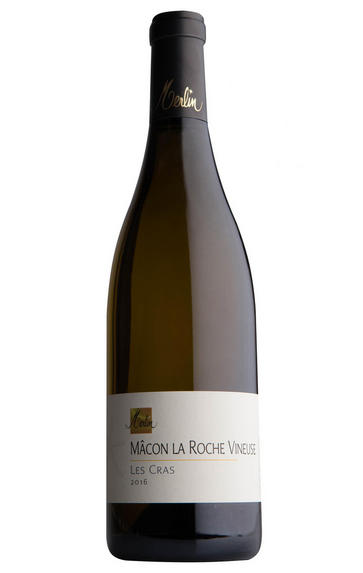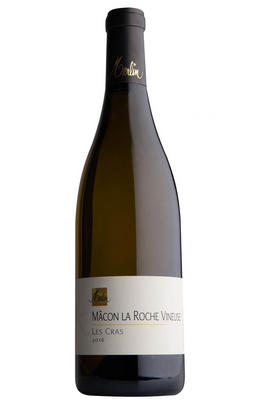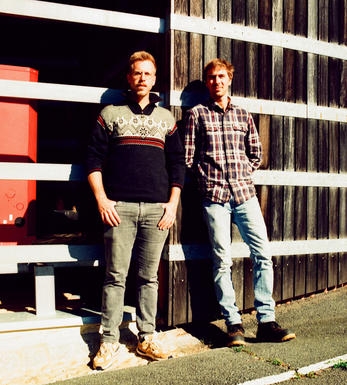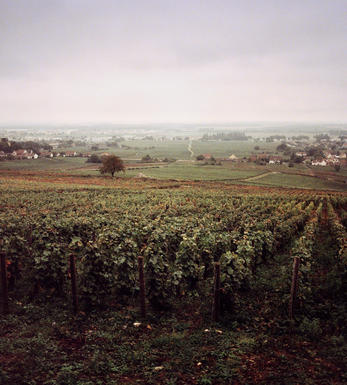
2016 Mâcon-la Roche Vineuse, Les Cras, Olivier Merlin, Burgundy

Critics reviews
The 2016 Mcon-La Roche-Vineuse Les Cras unfurls in the glass with aromas of nutmeg, green orchard fruit, mint and vanilla pod. On the palate, it's medium to full-bodied, with more texture and depth than the Vieilles Vignes bottling, displaying attractive stony tension at the core and concluding with a long finish.
William Kelley, Wine Advocate (August 2018)
About this WINE

Olivier Merlin
Olivier Merlin is widely regarded as being one of the very finest winemakers in the Mâconnais. He and his wife Corinne began in 1987 by renting 4.5 hectares. from René Gaillard, of Domaine du Vieux Saint-Sorlin, who wished to retire. Since then, Olivier has been buying the property in stages as well as adding new vineyards such as St Véran (in 1994 and ‘96). In September ‘97 Olivier took out a négociant's licence in order to be able to make some Pouilly Fuissé, since land in this appellation is neither available to buy nor to rent.
He makes three cuvées of Pouilly-Fuissé (one each from Fuissé, Vergisson and Chaintré) and a Viré-Clessé. From 2000 some Moulin-à-Vent joined the stable. The single-vineyard wines, including Mâcon-La Roche Vineuse, Les Cras and St Véran, Le Grand Bussière, get 18 months’ barrel-ageing with 30 to 50% new wood.
Olivier has established a reputation as one of the region’s most dynamic growers, a reference point for the Mâconnais. The whites demonstrate his exceptional winemaking talents, and the potential of “lowly” appellations. They are frequently taken for Côte d'Or wines if tasted blind. His Bourgogne Rouge is at its best after two to three years when the fruit expresses itself fully.
Olivier and Corinne have recently been joined at the domaine by their sons, Théo and Paul, who have completed their winemaking studies, and also spent time working at wineries in the Mornington Peninsula. With this extra manpower at the domaine’s disposal, Olivier has acquired a handful of new parcels including the Clos de France, in the heart of the village of Vergisson (2018 will be the inaugural vintage of the eponymous single-vineyard wine).
Discover the story behind our Own Selection Pouilly-Fuissé, made for us by Olivier. Read more

Mâcon
The city of Mâcon represents the capital of the Mâconnais district in the region of Burgundy, to which it lends its name. There are various appellations under the name Mâcon: the generic Mâcon AC, Mâcon Supérieur and the Mâcon-Villages, in ascending order of how much land each appellation entails.
The standard Mâcon AC controls around 53 hectares of vineyard, 70 percent of which is used to produce just white wine, primarily from the Chardonnay grape. Mâcon used to be recognised for its red wines, but in the last century Mâconnais whites have come to the forefront far more. This generic appellation represents a specific style of wine made across the Mâconnais district, rather than an appellation which would cover a select area or terroir.
The ‘Supérieur’ in Mâcon Supérieur refers not to an increase in quality but rather to the boost in alcohol content, a term which can be applied to either red or white wines.
Mâcon-Villages is a specific appellation which refers to white wines produced in certain areas of the Mâconnais region, and usually denotes an improvement in quality over the straightforward Mâcon AC wines.
Many of the small communes under the Mâcon classification opt to add their name to that of the appellation on their wines; notable examples include La Roche Vineuse, Uchizy and Lugny.
Wines from Mâcon tend to be uncomplicated affairs, simple but enjoyable, and the whites in particular are notable for their dry, light bodies and the presence of floral and nutty facets.

Chardonnay
Chardonnay is often seen as the king of white wine grapes and one of the most widely planted in the world It is suited to a wide variety of soils, though it excels in soils with a high limestone content as found in Champagne, Chablis, and the Côte D`Or.
Burgundy is Chardonnay's spiritual home and the best White Burgundies are dry, rich, honeyed wines with marvellous poise, elegance and balance. They are unquestionably the finest dry white wines in the world. Chardonnay plays a crucial role in the Champagne blend, providing structure and finesse, and is the sole grape in Blanc de Blancs.
It is quantitatively important in California and Australia, is widely planted in Chile and South Africa, and is the second most widely planted grape in New Zealand. In warm climates Chardonnay has a tendency to develop very high sugar levels during the final stages of ripening and this can occur at the expense of acidity. Late picking is a common problem and can result in blowsy and flabby wines that lack structure and definition.
Recently in the New World, we have seen a move towards more elegant, better- balanced and less oak-driven Chardonnays, and this is to be welcomed.


Buying options
Add to wishlist
Description
The name “Cras” comes from the word “Craie”, which translates directly as chalk or limestone. It’s therefore no surprise that there is a high active limestone content in the soil in this vineyard. This combined with the southwest exposition of the vineyard, gives wine which is a harmonious balance of ripe stone fruit and chalky mineral backbone. The 10 to 15 percent new oak is seamlessly integrated.
Drink 2020 - 2025
Adam Bruntlett, Senior Buyer, Berry Bros. & Rudd
Olivier and Corinne Merlin have been established in the Mâconnais village of La Roche Vineuse since 1987. Over the years they have bought the domaine which they originally rented, built a new cuverie, planted new vineyards locally and spread out into further appellations such as Pouilly-Fuissé and Moulin-à-Vent. Theirs has been one of the great success stories of the modern Mâconnais. They expect to be joined shortly by sons Théo and Paul.
Having made his first wines in 1987, this year represents Olivier’s 30th vintage in La Roche Vineuse. It is fair to say that in this time he has contributed much to raising standards in the Mâconnais. Proof of his great skill as a winemaker came in the form of a bottle of 1990 Mâcon La Roche Vineuse Vieilles Vignes, a highlight of a lunch at Berry Bros. & Rudd in July to mark Jasper Morris’s retirement.
wine at a glance
Delivery and quality guarantee